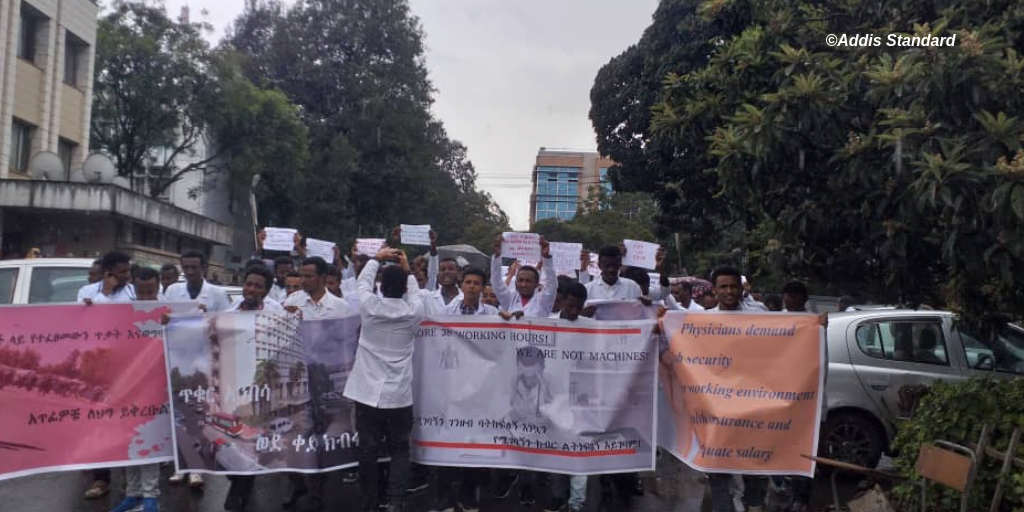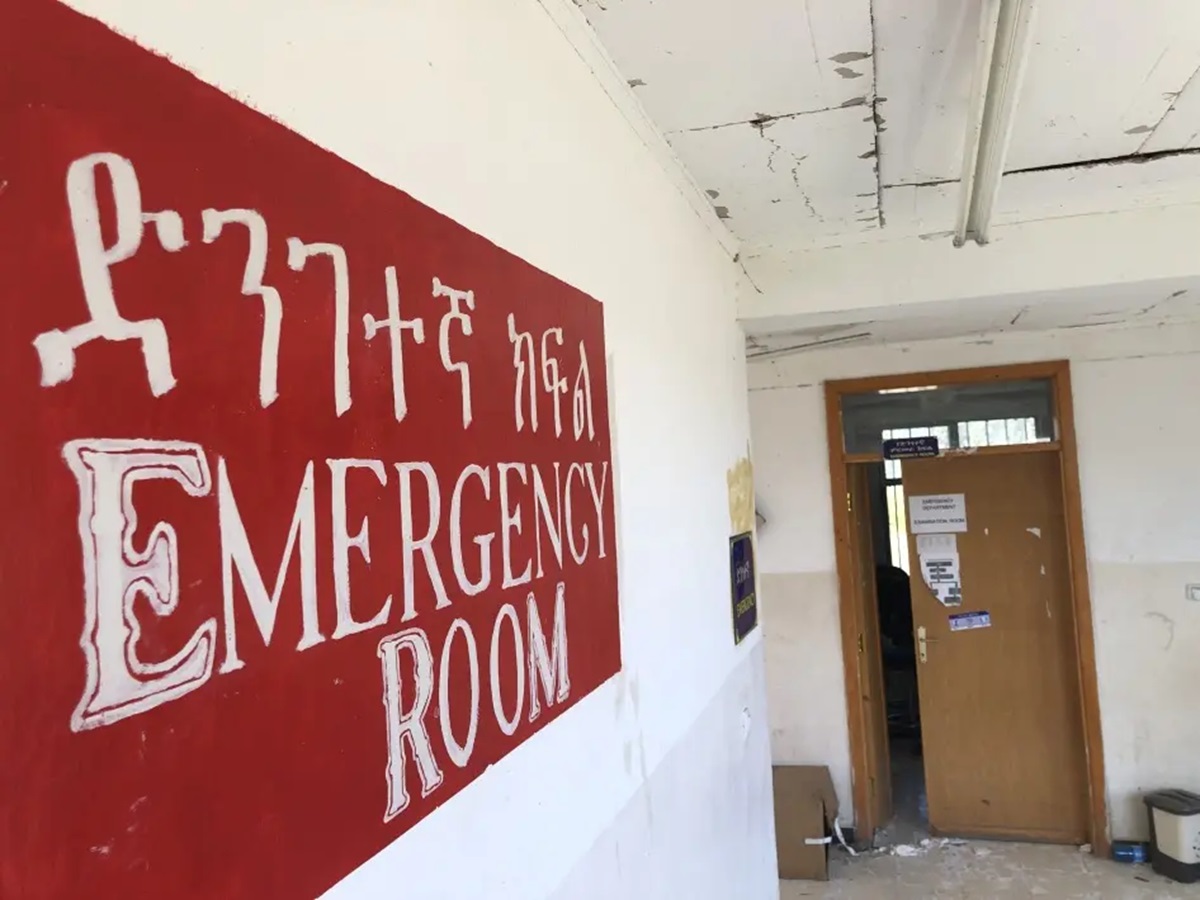Op-ed: The “flood and retain” strategy and the future of Ethiopian Doctors
Biniam Ewnte (MD, General Surgeon), For Addis Standard
Addis Abeba, April 24/2019 – Recently a group of unemployed graduate physicians have come forward and expressed their frustrations to various media that although the ministry of health assigned them to regional health bureaus, the answers they get from respective regional health bureaus were “we don’t have the budget to hire you.” Not were they only denied of employment but also of their rights to get licenses and their degrees, a practice introduced in Ethiopia and was implemented for more than ten years as part of the physician retention strategy of the country.
This was preceded by a protest of medical interns from Jimma University demanding several issues: one of which being employment following graduation and the right to get their Degrees. Some of the slogans read “secure our jobs or give us our medical licenses”. There were also similar Protests by medical interns of Arsi University, which, unfortunately ended with injuries of several students in the hands of the police. A more coordinated protest demonstrations were also held in multiple cities and medical university campuses on April 22.
So far, other than issuing statements promising that discussions would take place with protesting interns and students, one which took place with Arsi University students, the ministry of health chose to remain silent on the questions of all the protesters that resonated similar demands.
Unemployment of fresh university graduates is not unheard of in the Ethiopia, but this has not been the case for medical graduates. In fact, the WHO report for the density of physicians per population shows Ethiopia has way low number of physicians to meet the desired ratio.
In February 2012 the federal ministry of health introduced the “Flood and retain” strategy in hopes of increasing the number of physicians in the country. The program led to the opening of thirteen new medical schools; ten of which were university-based while the remaining three were Hospital based. It enrolled students with a first degree in any natural science field and the curriculum was originally designed to graduate students just in four and half years (later modified for five years). In addition to this, existing medical schools were asked to increase their intake dramatically.
This strategy was questioned by many scholars at the time on issues, among others, the quality of graduates it will entail, the intake capability of the institutions enrolling these students and the uptake ability of the slowly growing health sector for graduates. The ministry ignored all of them, considering they were mere resistance.
As part of the same strategy, a new rule was designed disabling the graduates to access their degree or license following graduation. The rule states that medical graduates have to serve for years based on a tier system which was designed according to the location of the hospital’s in question; the minimum service required being two years and maximum six (for those who are assigned in the capital Addis Abeba). Graduates defying this rule were asked to pay around 400,000 ETB to earn their certificates of degrees. The explanation given was the cost-sharing strategy of the ministry of education. In practice, however, the money wasn’t equivalent to the amount stated in the cost-sharing agreement signed by students during their university stays.
The fallacy
A study conducted in 2008 proposed retention as a strategy & production as a program as ways of medical doctors’ scale up as a long term solution to achieve physician to population ratio of 1:15,000 and 1:8,000 by the year 2015 and 2020, respectively. In contrary, the ministry adopted production as a strategy and hardly any effort was invested towards retention.
The Health Sector Development Program IV (HSDP IV) projection of human resources requirement by the Ministry of Health estimated to have 14,792 general practitioners by the year 2020. But no single data proves that as of yet. If so where does this gap in unemployment of the doctors came from?
What is next?
There seem to be acts of suppressing such demands using security forces, as witnessed in Arsi University. The effect of such forceful silencing won’t be very effective especially if the protests proceed with job strikes as many of them have warned. The devastating effect of Doctors on strikes has been well witnessed in 2017 in neighboring Kenya.
Unless the federal ministry of health began taking tangible measures these protests have a potential to escalate nationally as informal comments ridiculing unemployment of doctors by professional associations has recently intensified; various social media groups orchestrating such protests are also created threatening a potential escalation of these long-standing grievance towards the ministry.
In light of this, the ministry should begin to address the issue in one of the following ways: there should be a national discussion with professional associations as well as all medical school associations in the country; steps towards the gradual abolishment of this most criticized “flood and retain” strategy should begin without delays; and new rules stating that providing license and degrees upon graduation should be drafted.
As it were, Ethiopia is going through a very volatile transitional period; it can least afford to ignore the question any protester. The moves the federal ministry of health and all relevant authorities. What will happen next would most definitely shape the future of physicians and their ability to contribute in their fields to the country. AS









